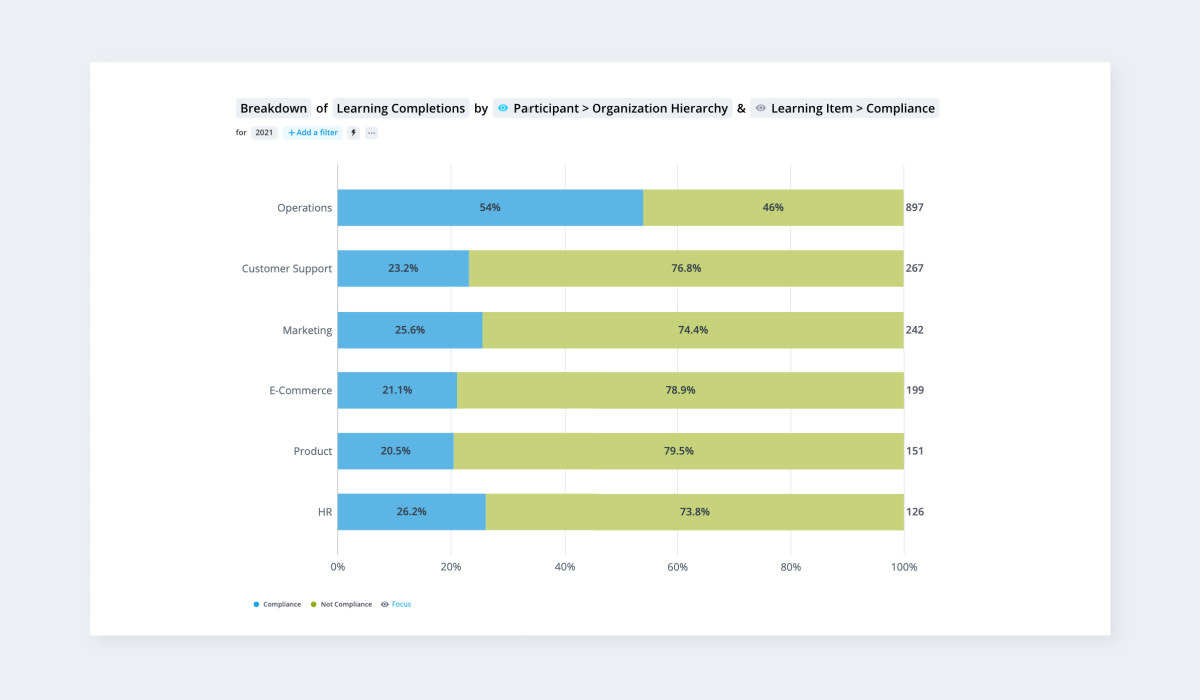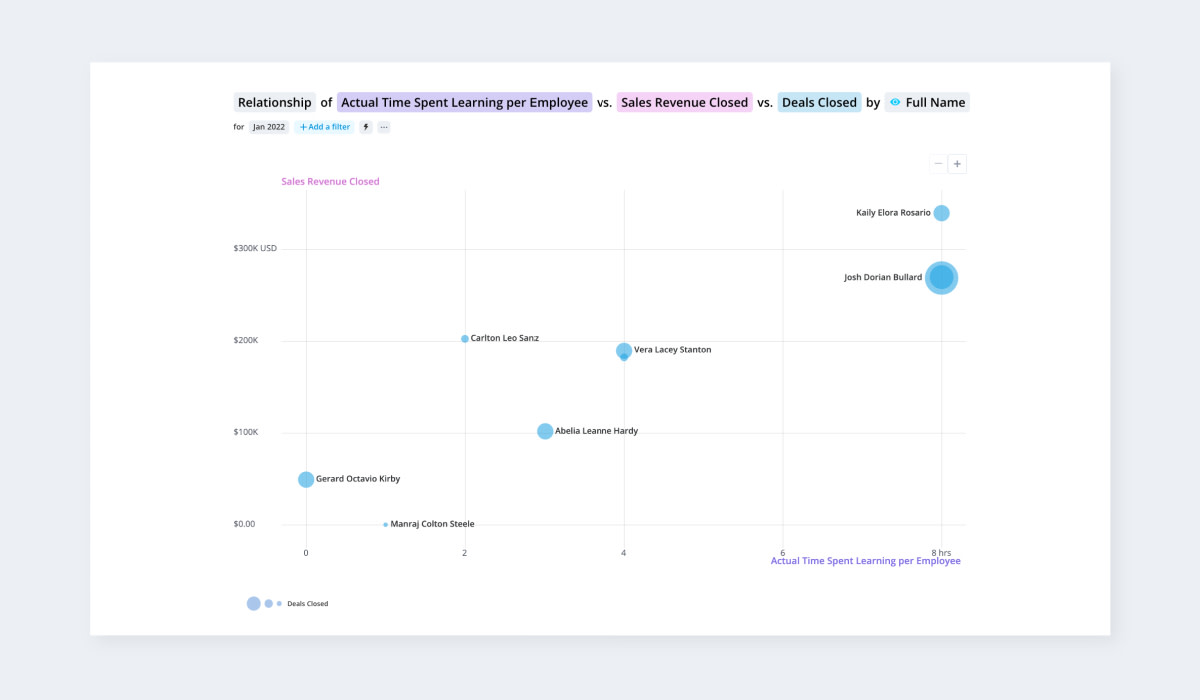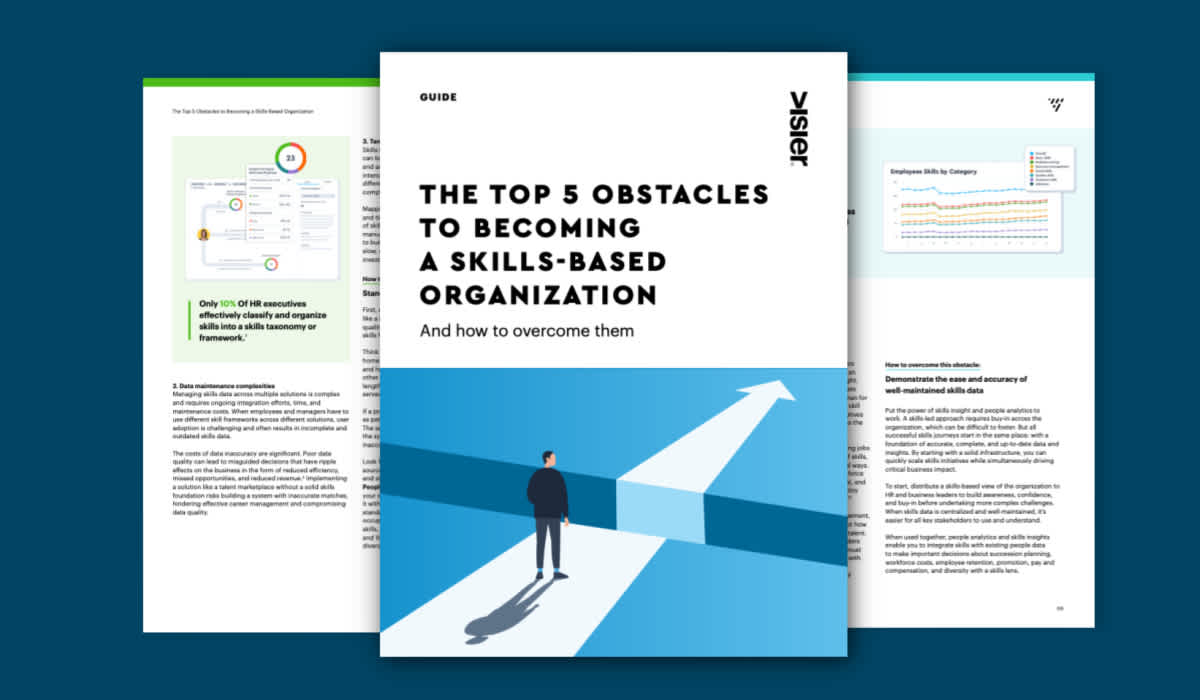Ask Visier: Do we have a culture of learning?
Learning and development budgets won’t reach their potential without a culture of learning. Visier can help you uncover if your organization's culture encourages skills development.

Why is learning and development important to organizations?
Skills are the core of how we approach work, collaboration, and building effective teams. In a learning culture, employees are encouraged to learn, share, and apply new skills and knowledge whenever possible to improve individual and organizational performance. Having employees feel comfortable using learning and development (L&D) resources to develop their skills is a trademark of a high-performance organization.

Companies are under increasing pressure to retain and attract talent, embrace new technology, and adapt to the new reality of work. Some skills are in high demand and hard to find, and it is vital to reskill and upskill employees internally, so organizations prepare for the future. In that context, the need for a culture of learning has never been more relevant and essential for a company.
Why should an HR pro ask how to measure the culture of learning?
Companies that adapt well to changing environments will achieve better results over time. Creating a culture of learning will not only impact the organization’s performance but will also have a positive impact on employee retention: when employees are intensely involved in learning, they feel more engaged and tend to stay. Learning and development resources have more value when they are fully utilized.
What can people data and analyticsreveal about your company’s culture of learning?
You might wonder if your company culture could be categorized as having a “culture of learning.” You have started some learning and development initiatives, you might offer a learning catalog, but is it working? Are your L&D resources geared towards your company’s needs? Does it have any impact on your overall culture and employees’ behavior? Data could help you answer this question.
Gain a clear understanding of your learning culture with Visier
In order to get the full picture of your learning and development culture, you need to gather learning, engagement surveys, business and sales results data. Without a unified analytics platform, it will be a challenge to connect all that data and accurately assess the impact of learning programs on business results and productivity.
How Visier helps you measure and improve your learning culture
Visier charts can help you set a baseline by answering the following questions: Which kind of training have been consumed this past year? Who are the highest consumers? If your organization spends a substantial amount of money in training, what is this budget used for? If your learning and development budget is mainly used to comply with regulations and policies, you cannot consider your company having a culture of learning.

This chart shows the distribution of compliance and non-compliance courses consumed by each business unit – you can easily drill down to see the distribution by department or supervisor. A high percentage of non-mandatory courses completion gives you a good indication of your employees’ motivation to learn new skills.
You also want to assess the impact of all your initiatives on the business. Are your employees performing better after completing the training and applying the learned knowledge?
To answer this question, you could start by analyzing a department like Sales, because it has such a direct impact on the business results. In the chart below, look for a relationship between the number of hours spent in training and sales revenue.

This chart shows you the relationship between quantity of learning hours completed and sales revenue closed. In this case, we see a direct relationship between the number of hours spent on skills development and the sales revenue.
Assess the business impact of all your learning and development initiatives by connecting the learning and development data to retention. Also check the relationship of the engagement and pulse surveys to learning strategy. With access to the engagement results at the individual level, you can directly correlate engagement with learning activities.
Finally, if your organization is tracking skills, Visier could help you analyze which employees’ skills are currently available and identify the ones missing or in short supply. You can track your progress against the targets to ensure your employees acquire or bring the necessary skills to help the organization to be successful.
As we saw, the concept of a learning culture has never been so pertinent and crucial for your organization. Your employees remain the greatest asset and biggest competitive advantage for your business; a culture of learning will help you develop and retain them. However, you need a solution to monitor your progress and make sure you are heading in the right direction.

Read more about learning and development:
Learning and development (L&D) programs are an integral part of employee engagement, retention, and performance management. Learn more here.
Employee upskilling is critical for workforce retention, growth, and strategic goal setting. Learn how to create an upskilling program here.
What is holding people back from seeing L&D’s value? L&D teams are struggling to measure the effectiveness of learning outcomes. Learn how people data can help.


